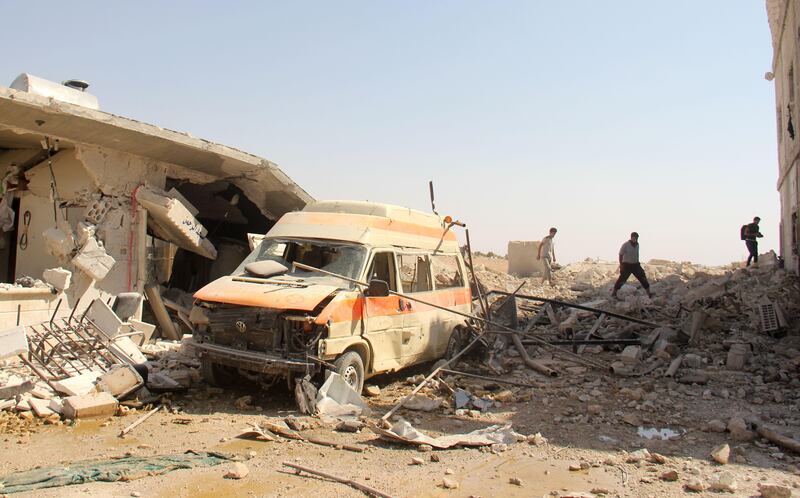An alliance of rebel factions dominated by a group with ties to Al Qaeda pressed an offensive in northern Syria on Wednesday after rejecting plans for a "de-escalation zone" to be imposed by Russia, Turkey and Iran in an area largely under rebel control.
There were conflicting reports as to whether Syrian rebel groups supported by the United States and Turkey were taking part in the attack launched on Tuesday on the border of Hama and Idlib provinces.
The offensive is led by Hayat Tahrir Al Sham, a coalition of rebel groups that controls much of Idlib and is dominated by Jabhat Fatah Al Sham, Al Qaeda’s affiliate in Syria before ostensibly breaking ties and changing its name from Jabhat Al Nusra.
Idlib is one of four Syrian de-escalation zones proposed by Russia and Iran, both backers of the government, and Turkey at peace talks in the Kazakh capital of Astana.
The latest round of talks last week resulted in an agreement between the three countries to jointly deploy 1,500 observers to monitor the Idlib zone, but they gave no formal statement on the fate of Hayat Tahrir Al Sham.
__________________________
Read more:
[ Turkey moves troops toward Syrian border after deal in Astana ]
Russia, Iran and Turkey to share monitoring of Idlib safe zone in Syria
__________________________
Syrian and Russian planes launched nearly 300 air strikes around Hama and Idlib in response to the offensive, the Syrian Observatory for Human Rights said.
The Observatory, which monitors Syria’s six-year-old civil war, also said groups that receive Turkish and US support had joined the rebel attack.
One of the groups denied the Observatory report but said it could launch its own attacks in co-ordination with Hayat Tahrir Al Sham if the aerial bombardment continued.
Capt Mahmoud Al Mahmoud, a spokesman for the Jaish Al Izza rebel group, said the Russian and Syrian strikes were targeting infrastructure and civilians in rebel-held villages where Hayat Tahrir Al Sham had no presence. The extent of the bombardment was putting pressure on other groups, including his, to join the fight, he said.
"If it happens, there could be some co-ordination with HTS about the timing," he told The National.
He accused the Syrian government of breaking previous ceasefire agreements in the area. “There was a ceasefire agreement signed in Ankara last year, but the regime forces in Hama countryside haven't complied with that agreement, nor with the many other agreements reached since then,” he said.
The latest fighting could damage the credibility of Turkey, which has provided support for rebel groups in Syria and has some influence over them.
“This battle in Hama embarrasses Turkey as a guarantor of rebel groups,” the Jaish Al Izza spokesmen said. “In the past, we sent many reports to the Turks on the regime violations in Hama countryside, but the Turkish side hasn't taken any deterring measure.
“This campaign could ignite the fire of a new battle in northern Hama.”
While the city of Hama has remained under Syrian government control throughout the conflict, towns and cities in Hama’s northern countryside were some of the first to fall to the rebels after the uprising against president Bashar Al Assad began in 2011. Rebel groups have maintained strong presence in the area since then, although the front lines have remained largely static.
Meanwhile, in eastern Syria, the Observatory reported that the Syrian Democratic Forces, a US-backed militia, had captured 90 per cent of Raqqa from ISIL, which has controlled the city for more than three years.
The SDF began its offensive to recapture Raqqa in early June, with the US providing military advisers and artillery and air support. The SDF controlled only about 65 per cent of the city last week but the remaining ISIL fighters there had pulled out in recent days because of heavy shelling and dwindling supplies of food and ammunition, the Observatory said.
The Observatory said it had documented the deaths of more than 1,000 civilians in Raqqa since the beginning of the battle as a result of air strikes and shelling by US-led coalition forces.
Nearly half a million combatants and civilians have been killed since the Syrian conflict began. The United Nations says that more than 5 million people have fled the country, and that more than 6 million are displaced inside it.





